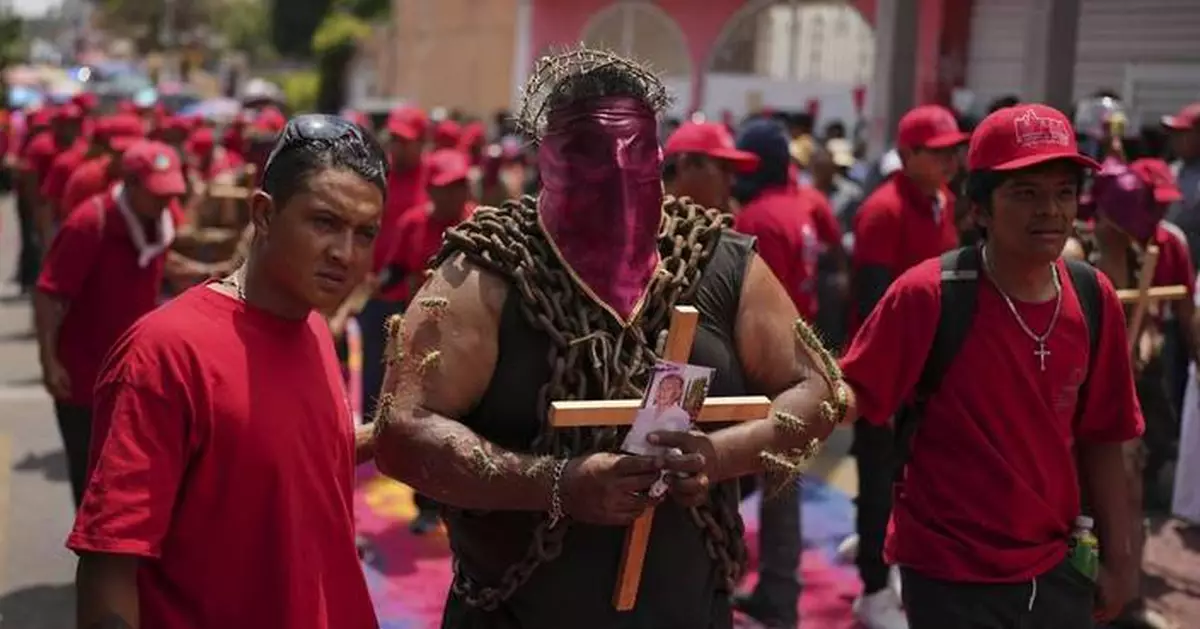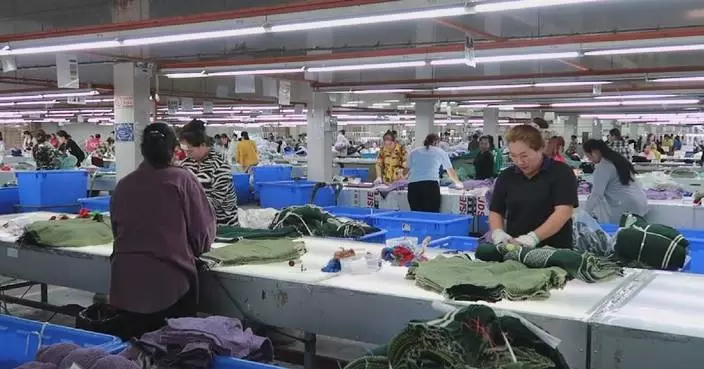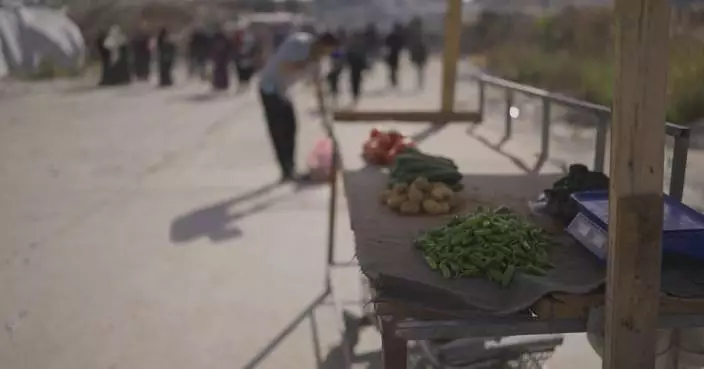ATLIXCO, Mexico (AP) — Every year, crowds fill the streets of the central Mexican town of Atlixco on the Catholic holiday of Good Friday to witness the sight.
Throngs of half-naked men walk through the scorching streets blindfolded, toting 70-pound chains and pieces of cactus lodged in their arms and legs. It’s part of a tradition in the town where participants say they are paying penance for their sins.
Click to Gallery
A masked penitent in chains with cacti attached to his arms, marches in a Holy Week procession in Atlixco, Mexico, on Good Friday, April 18, 2025. (AP Photo/Eduardo Verdugo)
A masked penitent in chains holds out his arms to have cacti attached to his arm, before taking part in a Holy Week procession in Atlixco, Mexico, on Good Friday, April 18, 2025. (AP Photo/Eduardo Verdugo)
A masked penitent in chains is led to take part in a Holy Week procession in Atlixco, Mexico, on Good Friday, April 18, 2025. (AP Photo/Eduardo Verdugo)
Masked penitents take part in a Holy Week procession in Atlixco, Mexico, on Good Friday, April 18, 2025. (AP Photo/Eduardo Verdugo)
A masked penitent, wearing chains and a crown of thorns and cacti attached to his arms, takes part in a Holy Week procession in Atlixco, Mexico, on Good Friday, April 18, 2025. (AP Photo/Eduardo Verdugo)
A masked penitent is helped with the chains he bears during a Holy Week procession in Atlixco, Mexico, on Good Friday, April 18, 2025. (AP Photo/Eduardo Verdugo)
Masked penitents, in chains with cacti stuck to their arms, march in a Holy Week procession in Atlixco, Mexico, on Good Friday, April 18, 2025. (AP Photo/Eduardo Verdugo)
A masked penitent, wearing chains and a crown of thorns, takes part in a Holy Week procession in Atlixco, Mexico, on Good Friday, April 18, 2025. (AP Photo/Eduardo Verdugo)
A masked penitent with cacti attached to his arms, drags a chain in a Holy Week procession in Atlixco, Mexico, on Good Friday, April 18, 2025. (AP Photo/Eduardo Verdugo)
A masked penitent in chains with cacti attached to his arms takes part in a Holy Week procession in Atlixco, Mexico, on Good Friday, April 18, 2025. (AP Photo/Eduardo Verdugo)APTOPIX
But participation has dipped in recent years, and a tradition that once involved more than 100 people now has just 35. It coincides with a larger dip in people who consider themselves Catholic in the Latin American nation.
Locals and organizers believe it’s due to the loss of faith among young people, who find the practice too burdensome.
Since 1990, the share of Mexicans who identify themselves as Catholic has dropped from just over 90% to 78%, according to Mexico’s 2020 census.
“Young people, they’re losing their faith,” said 68-year-old Atlixco businessman Vicente Valbuena, who conceded: “Also, the physical toll is pretty tough.”

A masked penitent in chains with cacti attached to his arms, marches in a Holy Week procession in Atlixco, Mexico, on Good Friday, April 18, 2025. (AP Photo/Eduardo Verdugo)

A masked penitent in chains holds out his arms to have cacti attached to his arm, before taking part in a Holy Week procession in Atlixco, Mexico, on Good Friday, April 18, 2025. (AP Photo/Eduardo Verdugo)
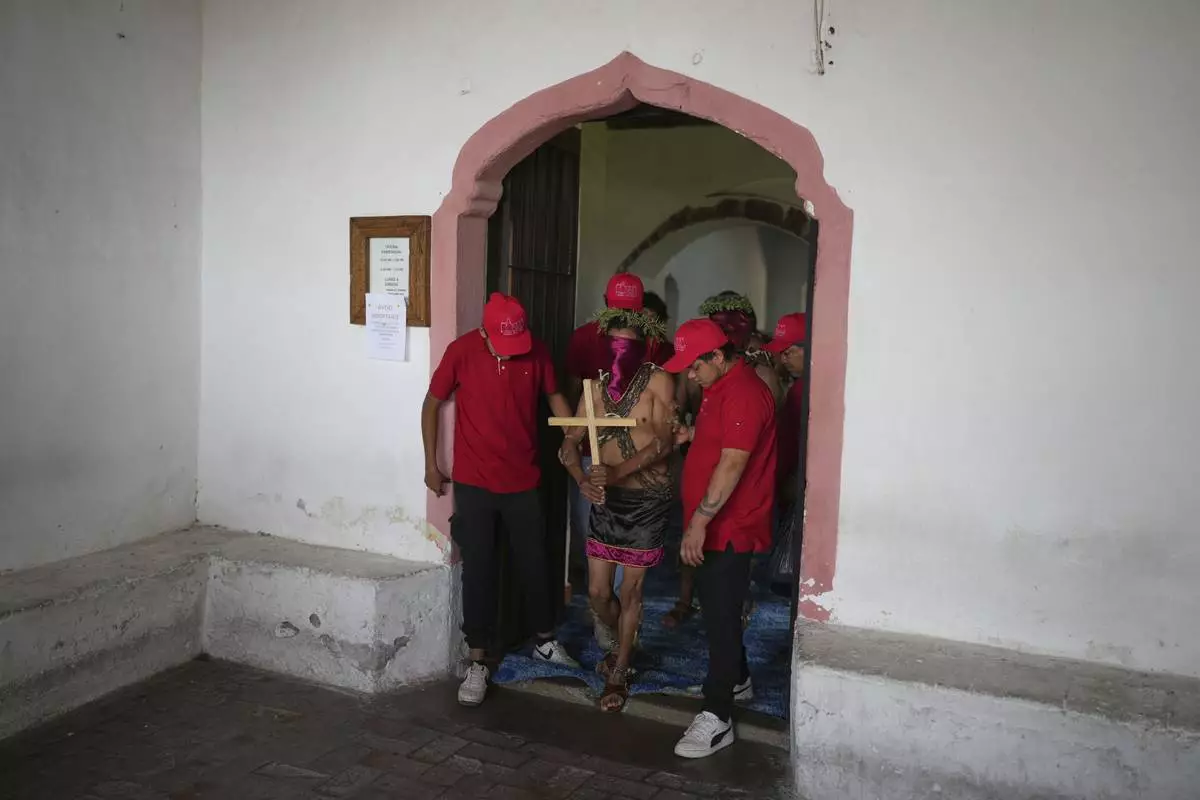
A masked penitent in chains is led to take part in a Holy Week procession in Atlixco, Mexico, on Good Friday, April 18, 2025. (AP Photo/Eduardo Verdugo)
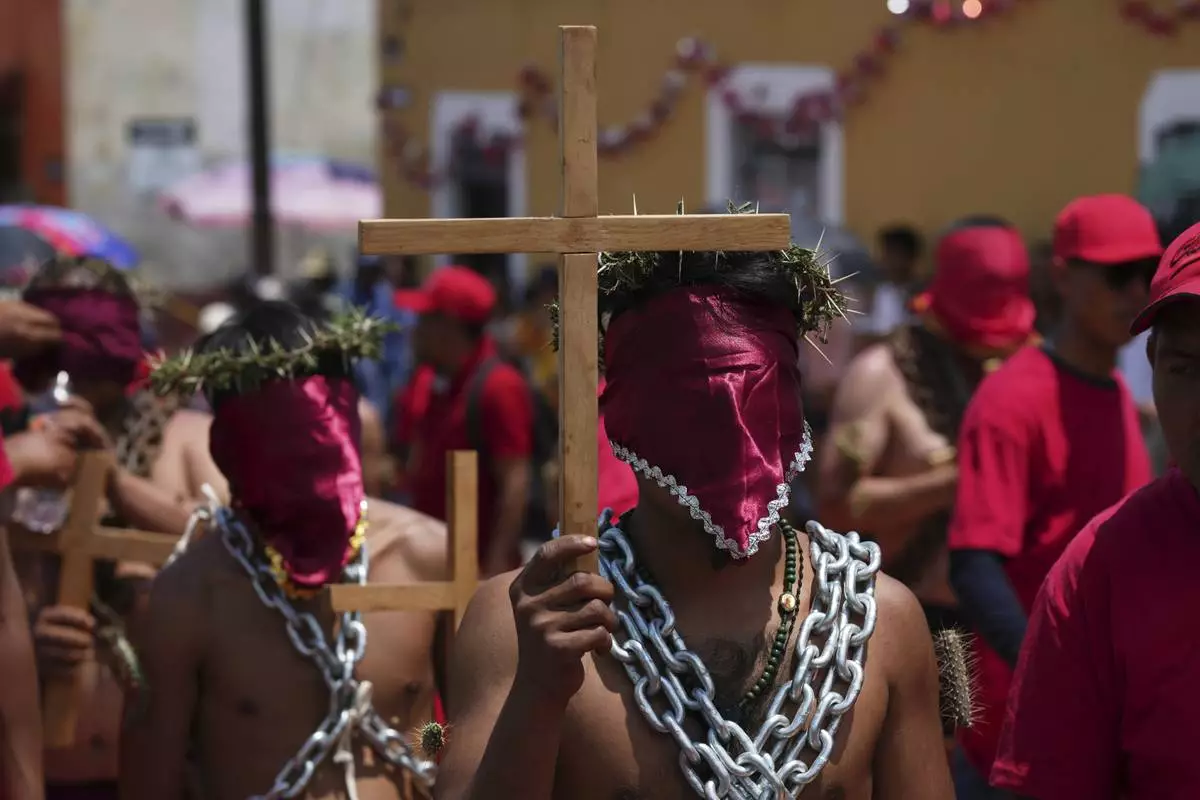
Masked penitents take part in a Holy Week procession in Atlixco, Mexico, on Good Friday, April 18, 2025. (AP Photo/Eduardo Verdugo)

A masked penitent, wearing chains and a crown of thorns and cacti attached to his arms, takes part in a Holy Week procession in Atlixco, Mexico, on Good Friday, April 18, 2025. (AP Photo/Eduardo Verdugo)

A masked penitent is helped with the chains he bears during a Holy Week procession in Atlixco, Mexico, on Good Friday, April 18, 2025. (AP Photo/Eduardo Verdugo)

Masked penitents, in chains with cacti stuck to their arms, march in a Holy Week procession in Atlixco, Mexico, on Good Friday, April 18, 2025. (AP Photo/Eduardo Verdugo)

A masked penitent, wearing chains and a crown of thorns, takes part in a Holy Week procession in Atlixco, Mexico, on Good Friday, April 18, 2025. (AP Photo/Eduardo Verdugo)

A masked penitent with cacti attached to his arms, drags a chain in a Holy Week procession in Atlixco, Mexico, on Good Friday, April 18, 2025. (AP Photo/Eduardo Verdugo)

A masked penitent in chains with cacti attached to his arms takes part in a Holy Week procession in Atlixco, Mexico, on Good Friday, April 18, 2025. (AP Photo/Eduardo Verdugo)APTOPIX
LOS ANGELES (AP) — Home ownership is receding further out of reach for most Americans as elevated mortgage rates and rising prices stretch the limits of what buyers can afford.
A homebuyer now needs to earn at least $114,000 a year to afford a $431,250 home -- the national median listing price in April, according to data released Thursday by Realtor.com
The analysis assumes that a homebuyer will make a 20% down payment, finance the rest of the purchase with a 30-year fixed-rate mortgage, and that the buyer’s housing costs won't exceed 30% of their gross monthly income — an often-used barometer of housing affordability.
Based off the latest U.S. median home listing price, homebuyers need to earn $47,000 more a year to afford a home than they would have just six years ago. Back then, the median U.S. home listing price was $314,950, and the average rate on a 30-year mortgage hovered around 4.1%. This week, the rate averaged 6.76%.
The annual income required to afford a median-priced U.S. home first crossed into the six figures in May 2022 and hasn't dropped below that level since. Median household income was about $80,600 annually in 2023, according to the U.S. Census bureau.
In several metro areas, including San Francisco, Los Angeles, New York and Boston, the annual income needed to afford a median-priced home tops $200,000. In San Jose, it's more than $370,000.
Rock-bottom mortgage rates turbocharged the housing market during the pandemic, fueling bidding wars for homes that pushed up sale prices sometimes hundreds of thousands of dollars above a seller initial asking price. U.S. home prices soared more than 50% between 2019 and 2024.
The U.S. housing market has been in a sales slump since 2022, when mortgage rates began to climb from their pandemic-era lows. Sales of previously occupied U.S. homes fell last year to their lowest level in nearly 30 years. In March, they posted their largest monthly drop since November 2022.
It's not all bad news for prospective homebuyers.
Home prices are rising much more slowly than during the pandemic housing market frenzy. The national median sales price of a previously occupied U.S. home rose 2.7% in March from a year earlier to $403,700, an all-time high for March, but the smallest annual increase since August.
In April, the median price of a home listed for sale rose only 0.3% from a year earlier, according to Realtor.com.
Buyers who can afford current mortgage rates have a wider selection of properties now than a year ago.
Active listings — a tally that encompasses all homes on the market except those pending a finalized sale — surged 30.6% last month from a year earlier, according to Realtor.com. Home listings jumped between 67.6% and 70.1% in San Diego, San Jose and Washington D.C.
As properties take longer to sell, more sellers are reducing their asking price. Some 18% of listings had their price reduced last month, according to Realtor.com.
“Sellers are becoming more flexible on pricing, underscored by the price reductions we’re seeing, and while higher mortgage rates are certainly weighing on demand, the silver lining is that the market is starting to rebalance,” said Danielle Hale, chief economist at Realtor.com. "This could create opportunities for buyers who are prepared.”
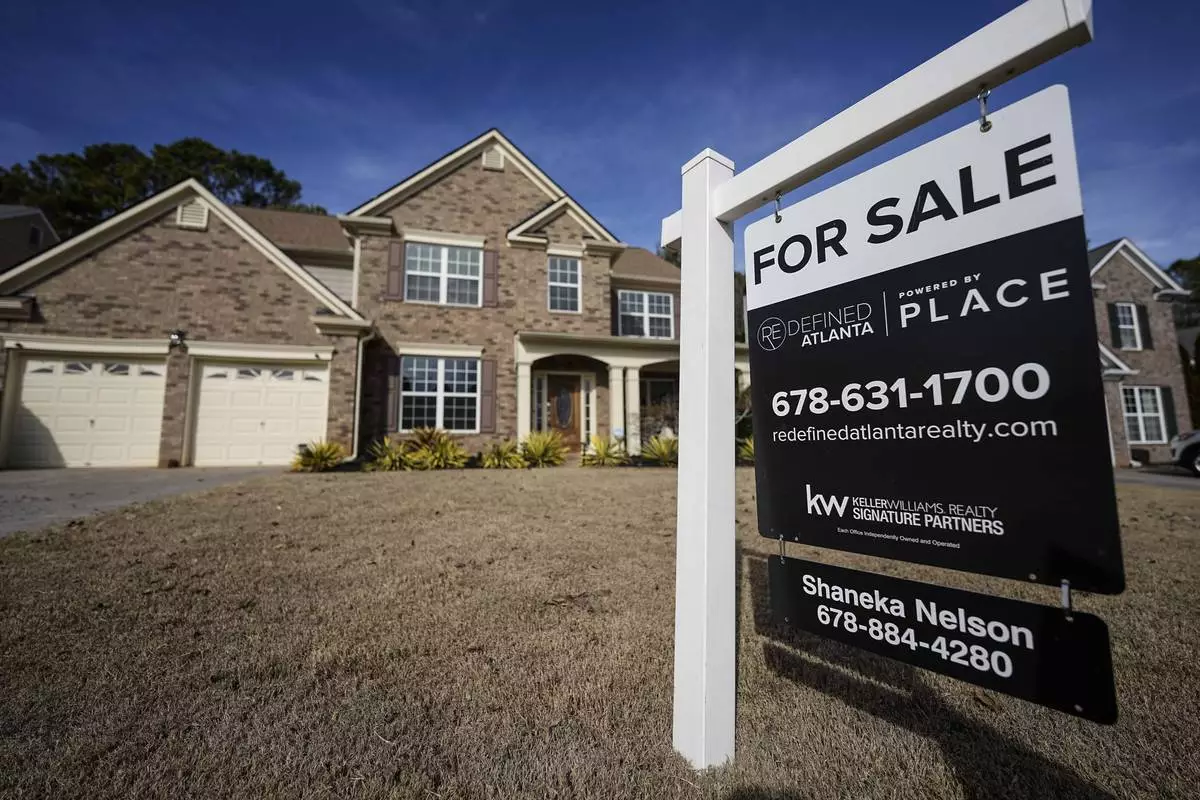
FILE - A sign announcing a home for sale is posted outside a home, Thursday, Feb. 1, 2024, in Aceworth, Ga., near Atlanta. (AP Photo/Mike Stewart, File)
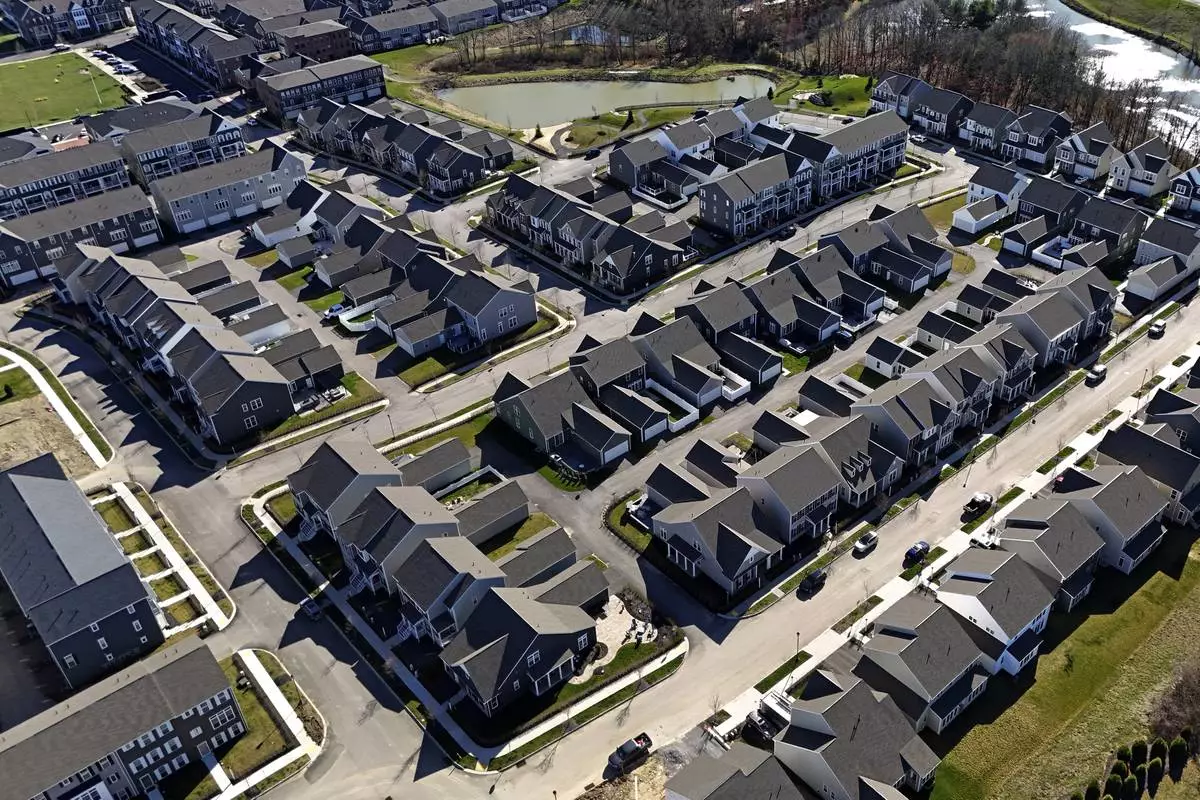
FILE - A housing development in Cranberry Township, Pa., is shown on March 29, 2024. (AP Photo/Gene J. Puskar, File)












